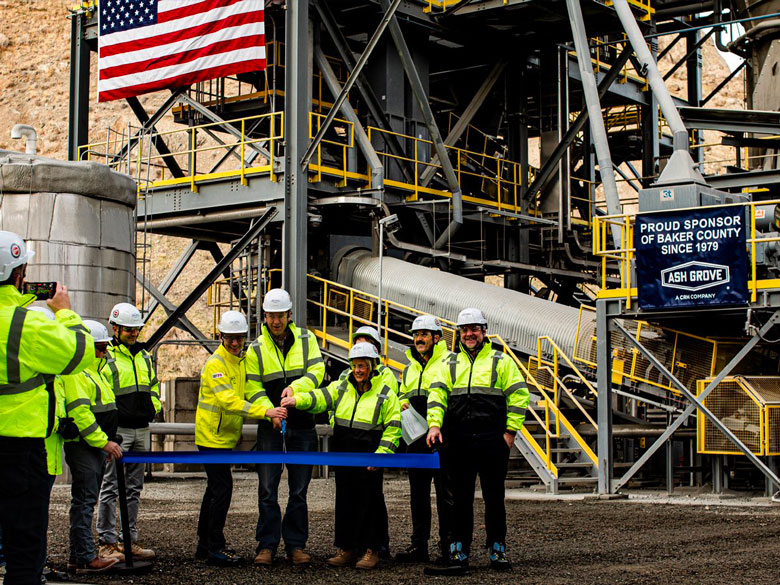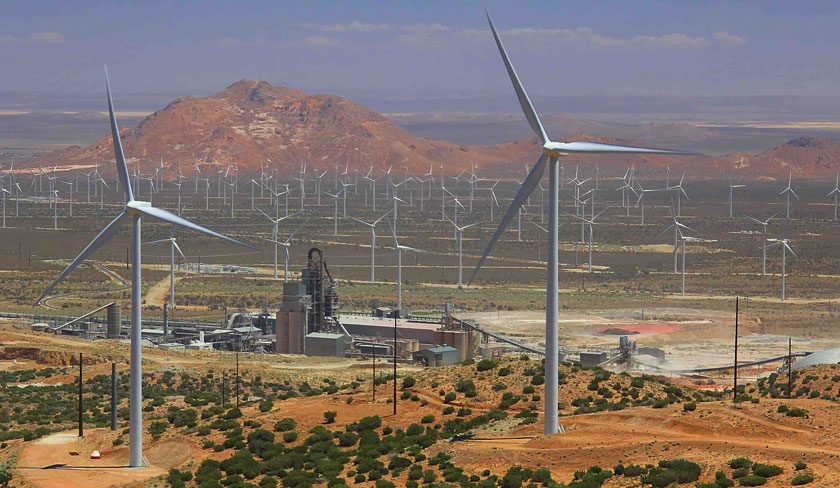In the first quarter 2017, sales volumes of HeidelbergCement’s building materials rose substantially as a result of the consolidation of Italcementi, according to the company. The continued recovery of the construction industry in North America and Europe also had a positive impact on the development of sales volumes. In contrast, development in the emerging countries was mixed.
The company’s cement and clinker sales volumes increased by 58 percent to 27.8 million metric tons (Mt) in the first quarter as a result of the acquisition. On a pro forma basis, i.e. taking into account Italcementi’s deliveries in the same period of the previous year, sales volumes remained unchanged. Cement sales volumes showed an improvement in all areas apart from Africa-Eastern Mediterranean Basin. The strongest increase on a pro forma basis was recorded in Northern and Eastern Europe-Central Asia, followed by Western and Southern Europe as well as North America.
Deliveries of aggregates also registered an acquisition-related rise of 23 percent to 60.9 Mt (previous year: 49.3). Taking into account Italcementi’s deliveries in the same period of the previous year, the growth amounts to 8 percent. Deliveries of ready-mixed concrete rose by 31 percent to 10.4 million cubic meters. On a pro forma basis, sales volumes fell slightly by 1 percent.
As a result of the Italcementi consolidation, revenue and result from current operations before depreciation and amortization increased significantly. Group revenue rose by 34 percent in the first quarter. The result from current operations before depreciation and amortization improved by 19 percent. After depreciation and amortization, the result from current operations fell by 21 percent to €108 million ($117 million).
On pro forma basis, revenue increased slightly. The result from current operations before and after depreciation and amortization, however, declined by 2 percent and 13 percent, respectively. The result from the mature markets of Europe and North America rose significantly in the first quarter of 2017 despite the already relatively strong first quarter of the previous year and bad weather conditions. As the contribution to results from these markets is generally rather weak in the first quarter due to seasonal factors, it could not offset the decline in result in the emerging countries, which was mainly due to a drop in prices in Indonesia and Ghana. The result in Western and Southern Europe was additionally negatively impacted by higher maintenance costs, which in comparison with the previous year were more pronounced in the first quarter. Energy costs also rose moderately in comparison with the first quarter of 2016.
“We continued our strong operational development in the first quarter and realized further synergies,” said Dr. Bernd Scheifele, chairman of the managing board. “We were able to almost offset the effect of higher energy costs, bad weather conditions, and increased competition in some emerging countries in the most seasonally weak quarter of the year. Thanks to the ongoing refinancing of our maturities at more favorable terms, we have successfully continued to improve the financial result and made an important contribution to the further rise in our cash flow. All in all, we have slightly increased the Group share of profit for the financial year despite the challenging environment.”
The implementation of the measures to integrate Italcementi is progressing well, the company noted. In North America, operational best practices that have proven successful have already been transferred to the acquired plants, thereby substantially improving operational key performance indicators. The integration remains on schedule, and the synergy target of €470 million ($510.9 million) still applies.
“We continued our strong operational development in the first quarter of 2017,” explained Dr. Scheifele. “We will maintain our focus on concluding the integration of Italcementi and reducing net debt through disciplined cash flow management. Our declared aim is to maintain a long-term investment grade rating. In operational terms, we concentrate on five areas: an increase in customer satisfaction, high operating leverage, cost leadership, vertical integration, and optimized geographical positioning. As a result, we will increase our efficiency and the satisfaction level of our customers, especially in the world’s rapidly growing metropolitan areas. We will continue to drive forward our global programs to optimize costs and processes as well as increase margins for aggregates (Aggregates CI), cement (CIP), ready-mixed concrete (CCR), and purchasing (FOX).”
“We remain cautiously optimistic about 2017,” continued Dr. Scheifele. “While the overall outlook for the global economy is positive, major macroeconomic and particularly geopolitical risks remain. HeidelbergCement will benefit from the good and stable economic development in the industrial countries, above all in the USA, Canada, the United Kingdom, Germany, the countries of Northern Europe and Australia. These countries generate approximately 60 percent of our revenue.”
“With the acquisition of Italcementi and its rapid integration, we have impressively demonstrated our tremendous business potential and strong momentum. From a global perspective, we are well positioned to achieve our strategic goals – continuous growth and sustainable returns for our shareholders,” he concluded.



